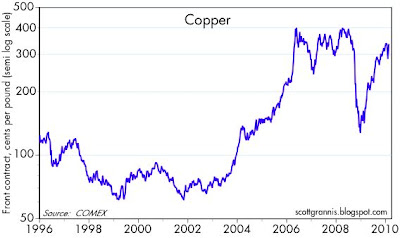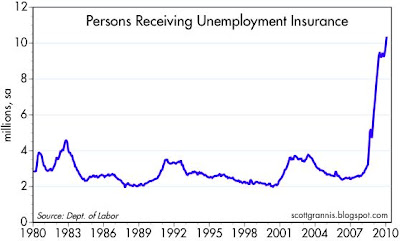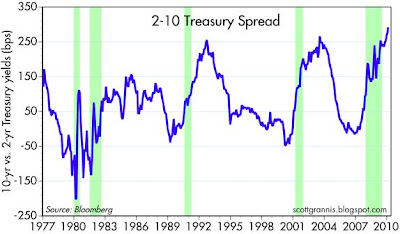By the time the tsunami hit Hawaii today it was pretty tame. But there is a huge political tsunami that is headed to Washington, and it is expected to hit in early November of this year. This chart, which shows Obama's Approval Index hitting an all-time low for the second time, is the evidence for my claim.
The chart makes it clear that more and more people strongly disapprove with what Obama is doing, at the same time that fewer and fewer strong approve. Obama and the Dems seem to think the reason for this is that they haven't done enough to advance the liberal agenda, but for any objective observer, I think it's clear that they have tried to do way too much.
The sudden birth of the Tea Party movement about a year ago was like the first of a swarm of earthquakes that have since generated bigger and bigger aftershocks. The Massachusetts election of Scott Brown last month was not only a major aftershock, but it eclipsed all of the prior ones. Just two days ago was the healthcare reform summit, another major aftershock. (Don't miss Peggy Noonan's excellent description here.) The tsunami waves have been set in motion, and they are traveling all around the 50 states, gathering momentum and amplification as the errors of Washington collide with political topography of the country.
Are there enough Democrats really willing to sacrifice everything in order to engineer a government takeover of almost one-fifth of the economy? Rahming it through via reconciliation is surely a no-win situation. The public doesn't support the package at all, and any attempt to force it through, especially if more behind-the-scenes wheeling and dealing is necessary to accomplish it, will only sour the public even more. I don't see Nancy Pelosi getting the votes. And the harder she tries, the worse it's going to be. And even if the bill does somehow pass, it is so riddled with fatal flaws that it is unlikely to ever be implemented.
So my sense is that Democrats will be scurrying for high ground in the months to come, just as the residents of Hawaii evacuated the shoreline this morning in advance of the tsunami's arrival. Gridlock will be the likely result, and that's a very good thing at this point.
The true path to high ground lies in radically scaling back the ambitions of Washington lawmakers. Otherwise, they are going to be swamped. Mark Steyn has a good analogy for all this:
While Barack Obama was making his latest pitch for a brand new, even more unsustainable entitlement at the health care "summit," thousands of Greeks took to the streets to riot. An enterprising cable network might have shown the two scenes on a continuous split-screen - because they're part of the same story. It's just that Greece is a little further along in the plot: They're at the point where the canoe is about to plunge over the falls. America is further upstream and can still pull for shore, but has decided, instead, that what it needs to do is catch up with the Greek canoe.
Think of Greece as California: Every year an irresponsible and corrupt bureaucracy awards itself higher pay and better benefits paid for by an ever-shrinking wealth-generating class. In Greece, they've run out Greeks, so they'll stick it to the Germans... in America, Obama, Pelosi and Reid are saying we need to paddle faster to catch up with the Greeks and Germans. What could go wrong?
We need to stop the runaway growth of government, entitlement programs, wealth redistribution, transfer payments and taxes, and we need to send politicians to Washington who understand this. I think this can happen, and that's one reason why I remain optimistic. The coming political tsunami is going to wash away a lot of the deadwood and corruption in Washington, and it's going to leave in its place a new generation of politicians who understand that the best thing for the country is to just leave the people alone.




















































